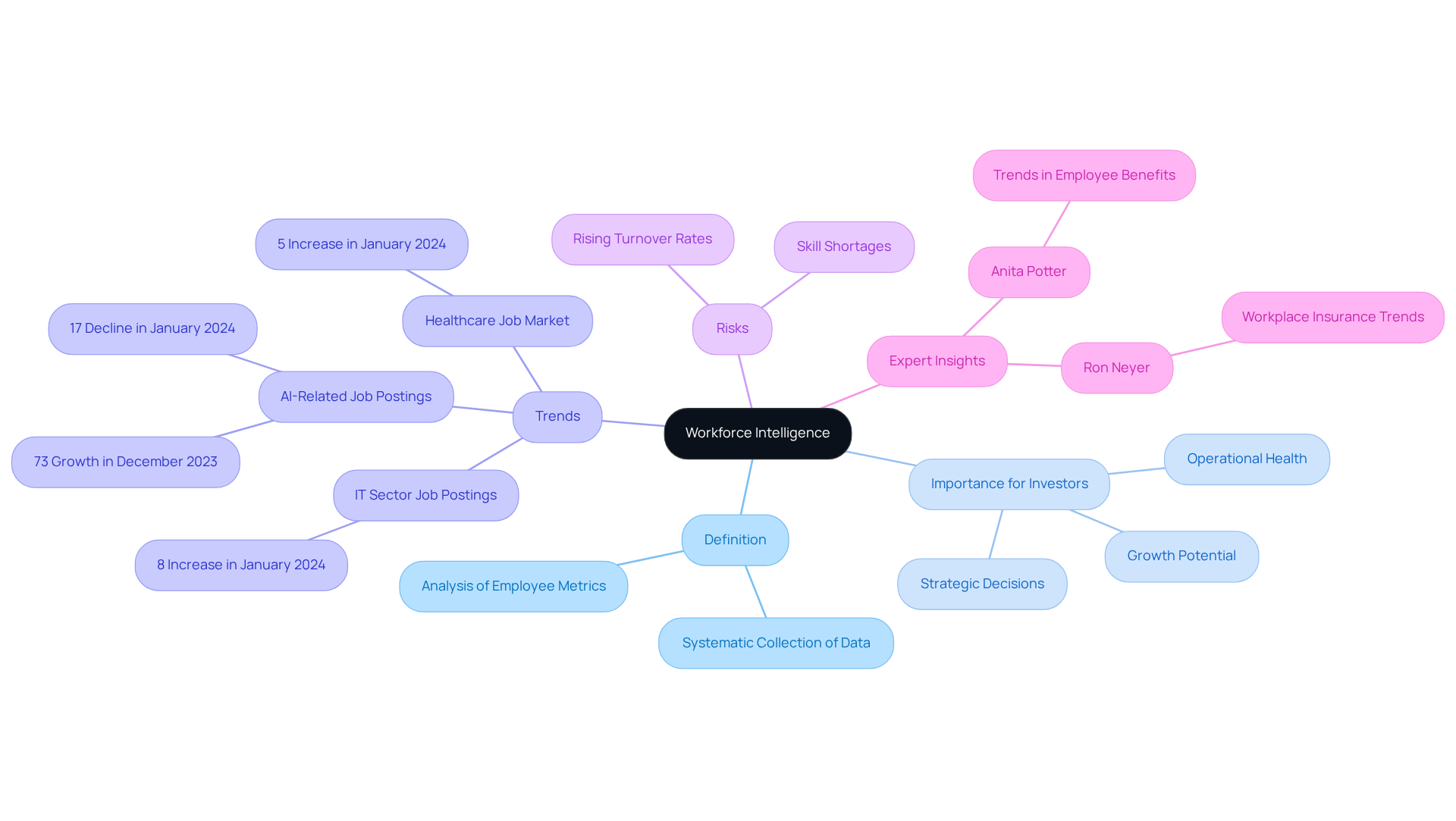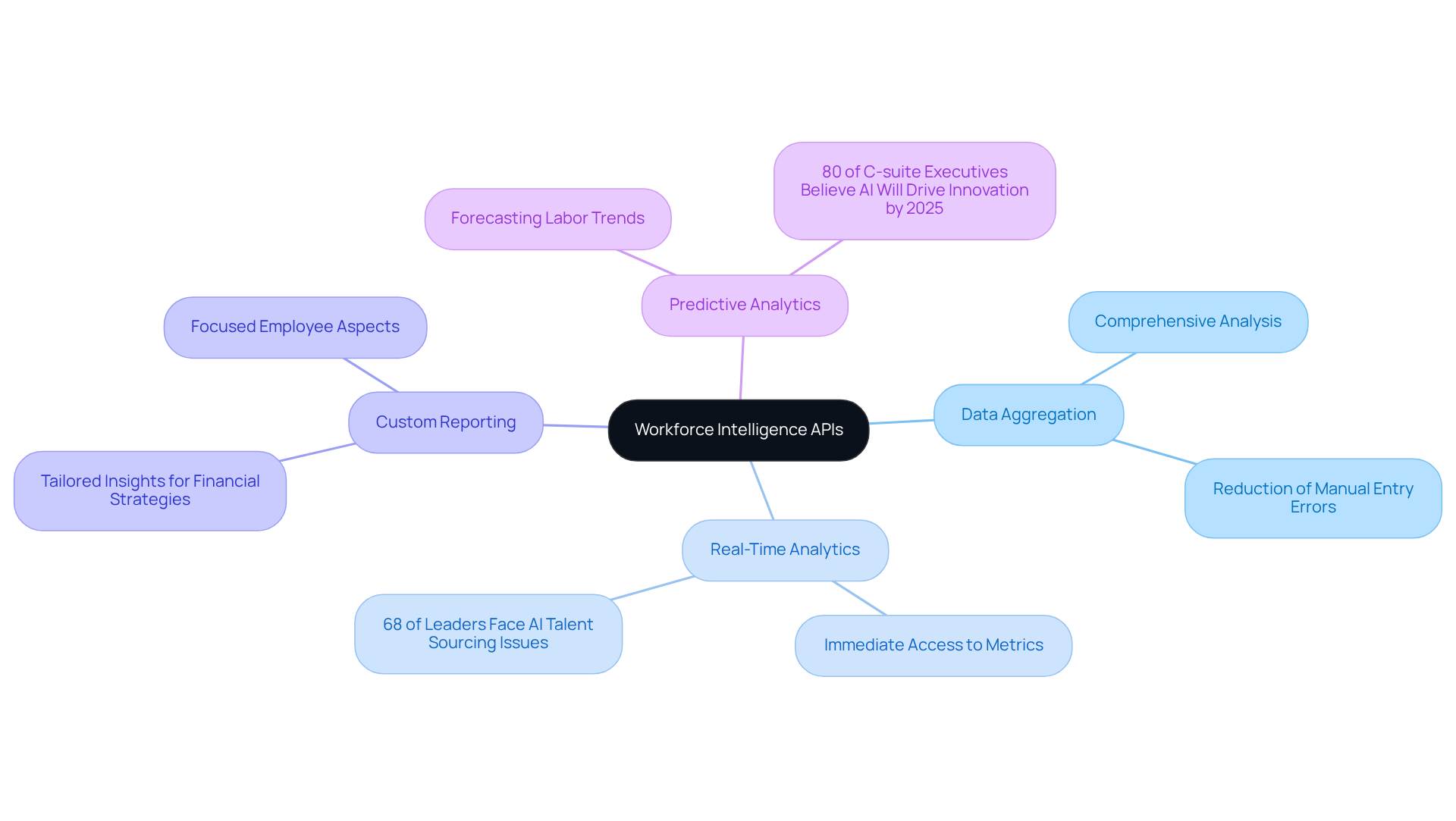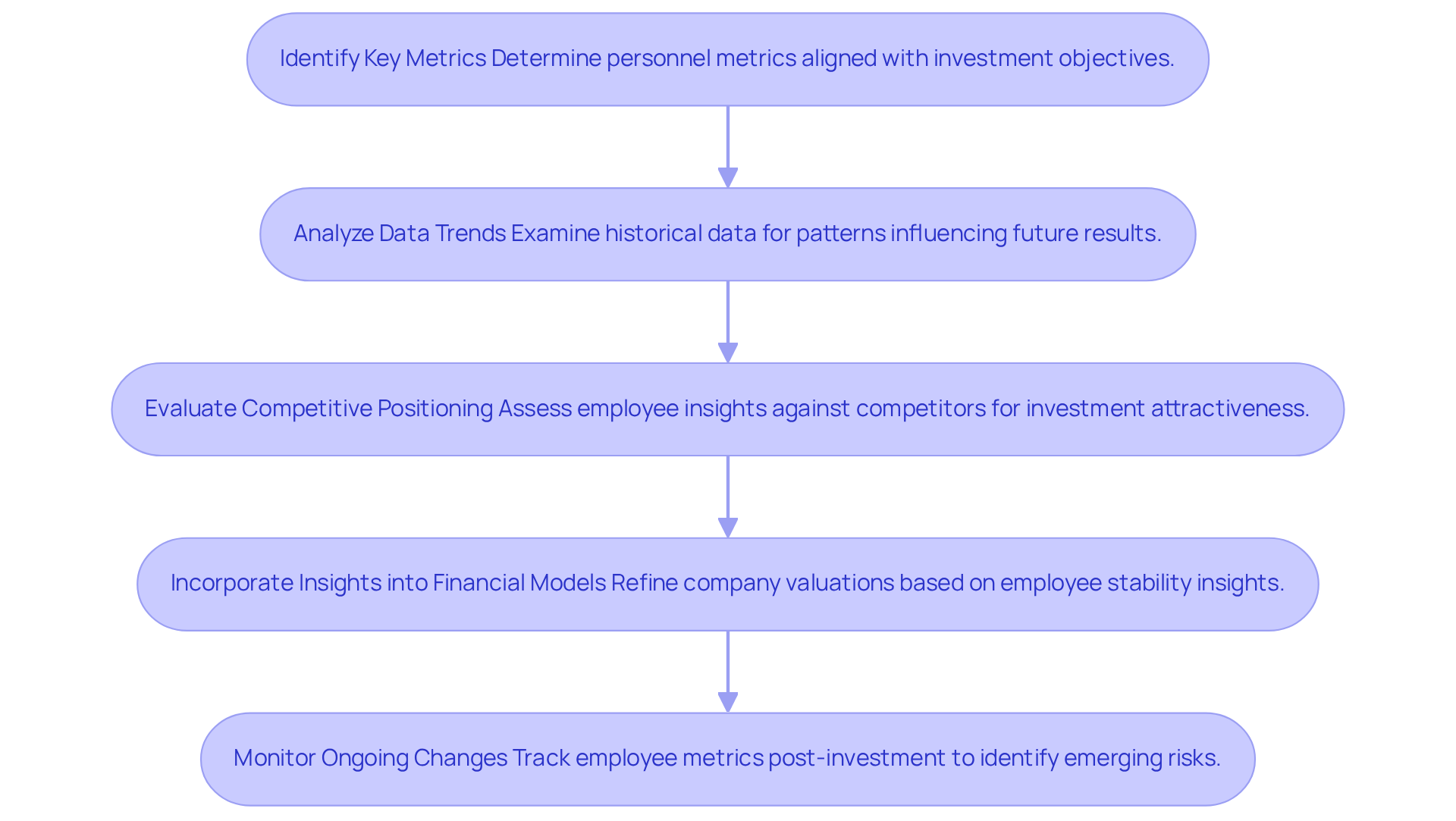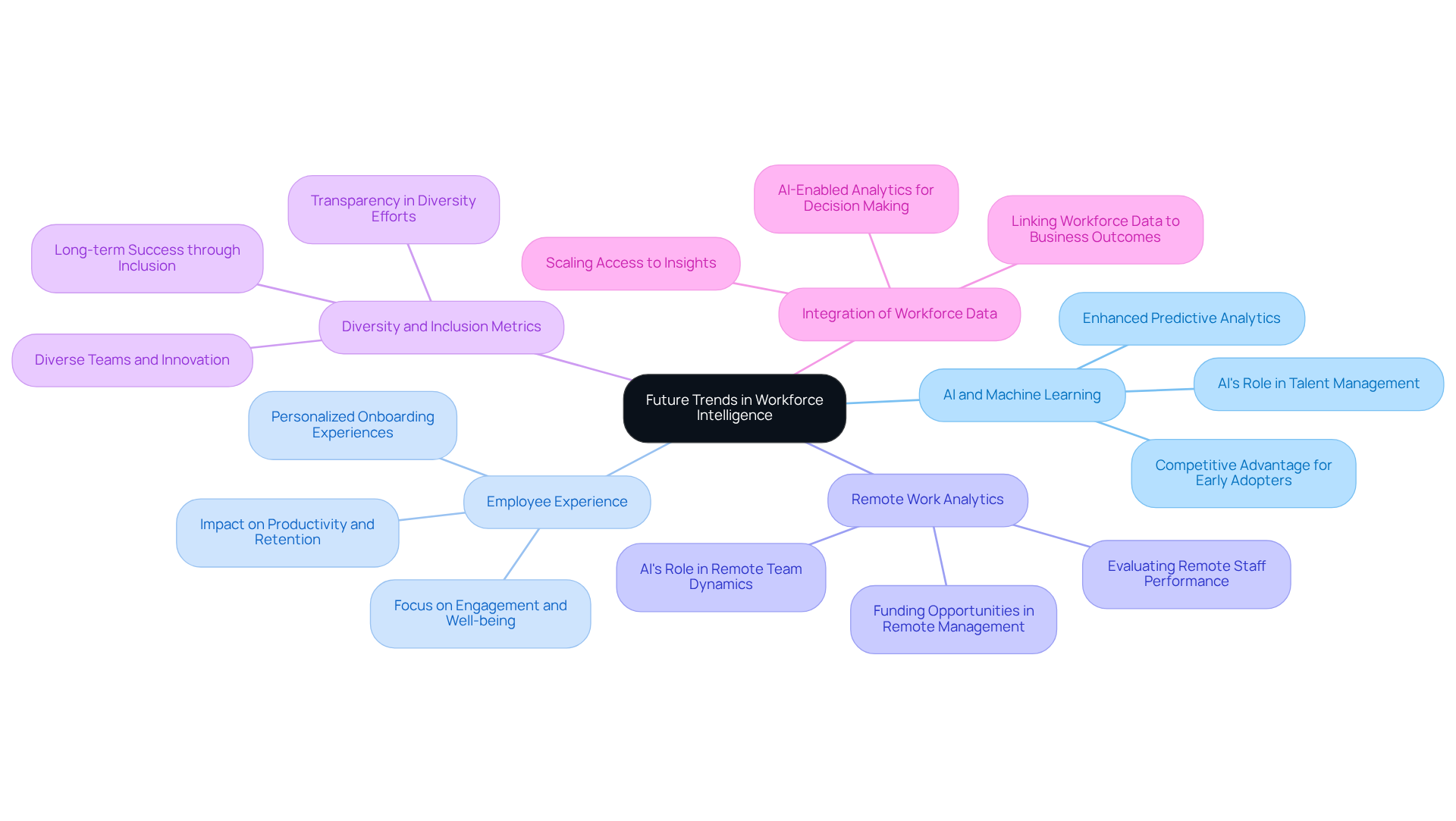Overview
Workforce intelligence APIs are essential for investors aiming to enhance their strategic investment decisions. These tools provide comprehensive insights into employee performance, skills, and overall organizational health. By facilitating data aggregation, real-time analytics, and predictive capabilities, these APIs empower investors to identify trends and assess risks that directly impact a company’s potential for growth and sustainability.
Consider how these insights can transform your investment strategy. With access to real-time data, you can make informed decisions that align with market dynamics. Investors can leverage these APIs to not only track performance but also to forecast future trends, creating a proactive approach to investment.
The ability to assess organizational health through these APIs is invaluable. By understanding the nuances of employee performance and skill sets, investors can pinpoint areas of strength and weakness within a company. This knowledge allows for a more nuanced evaluation of a company’s growth potential, ultimately leading to smarter investment choices.
In conclusion, integrating workforce intelligence APIs into your investment strategy is not just beneficial; it's imperative. By harnessing these tools, you position yourself to navigate the complexities of the market with confidence and foresight. Are you ready to elevate your investment decisions?
Introduction
Understanding the dynamics of a company's workforce is paramount for investors navigating today's competitive landscape. Workforce intelligence APIs serve as a powerful lens, providing insights into employee performance, skills, and overall productivity. Such insights reveal hidden opportunities and potential risks that are critical to informed decision-making. As the job market evolves and companies face new challenges, how can investors effectively leverage these insights to drive strategic investment success?
Define Workforce Intelligence and Its Importance for Investors
Employee insights represent the systematic collection and analysis of data regarding an organization's workforce, encompassing employee skills, performance metrics, and overall productivity. For investors, grasping the intricacies of employee analytics through the workforce intelligence API for investors is vital, as it offers a holistic view of a company's operational health and potential for growth. Notably, the IT sector experienced an 8% surge in job postings in January 2024, signaling a strong demand for talent that investors must consider. By utilizing the workforce intelligence API for investors to scrutinize employee data, investors can pinpoint trends that reveal a company's capacity for innovation, adaptability, and competitive edge in the market.
This understanding also highlights potential risks associated with , such as rising turnover rates or skill shortages, which could jeopardize the company's long-term sustainability and profitability. Furthermore, real-time employee data is essential for forecasting talent requirements and making informed decisions. Consequently, the use of a workforce intelligence API for investors to integrate human resource insights into investment assessments empowers them to make more strategic and informed choices, ultimately enhancing their investment outcomes. Insights from industry experts like Anita Potter underscore the necessity of recognizing these trends to succeed in the ever-evolving corporate landscape.

Explore the Functionality of Workforce Intelligence APIs
Employee intelligence APIs serve as crucial tools that empower organizations to seamlessly access and analyze personnel information. These APIs integrate with various data sources, such as HR systems, performance management tools, and external labor market databases, offering a holistic view of employment dynamics. Key functionalities include:
- Data Aggregation: APIs amalgamate data from diverse sources, enabling comprehensive analysis without the burdensome manual data entry, which is often time-consuming and prone to errors.
- Real-Time Analytics: Investors gain immediate access to current employee metrics, facilitating timely decision-making that aligns with market dynamics and organizational needs. A recent survey reveals that 68% of business leaders encounter difficulties in sourcing adequate AI talent, underscoring the necessity for real-time insights.
- Custom Reporting: Tailored reports generated by APIs focus on specific employee aspects relevant to financial strategies, delivering concentrated insights that drive improved outcomes.
- Predictive Analytics: By leveraging historical data, these APIs forecast future labor trends, aiding in risk assessment and opportunity identification—essential components for strategic funding planning. Notably, 80% of C-suite executives believe that AI will drive innovation by 2025, highlighting the critical importance of integrating such technologies.
Utilizing the for investors enhances analytical capabilities through employee analytics, resulting in more informed and strategic investment decisions. Companies like Salesforce exemplify the effective deployment of these APIs, embedding employee insights into their operational frameworks to sustain a competitive advantage and enhance talent management. Their implementation of AI-driven talent platforms has led to improved decision-making processes and heightened operational efficiency, illustrating the tangible benefits of employee data APIs.

Apply Workforce Intelligence Insights to Investment Strategies
Applying workforce intelligence insights to investment strategies necessitates several critical steps:
- Identify Key Metrics: Begin by determining the personnel metrics that align with your investment objectives. Consider factors such as employee turnover rates, skill availability, and productivity levels. These metrics are vital for understanding employee stability and the potential impacts on financial performance, especially when leveraging for investors.
- Analyze Data Trends: Utilize the workforce intelligence API for investors to examine historical data and uncover patterns that may influence future results. For instance, a consistent increase in employee engagement scores could indicate a positive cultural shift within a company, likely resulting in enhanced productivity and retention.
- Evaluate Competitive Positioning: Assess how a company's employee insights stack up against its competitors. Organizations that utilize workforce intelligence API for investors often have a highly skilled and engaged workforce, which provides them with a competitive advantage and makes them more attractive investment opportunities.
- Incorporate insights from the workforce intelligence API for investors into financial models to refine company valuations. For example, a company exhibiting strong employee stability may warrant a higher valuation due to reduced associated risks, particularly in volatile markets.
- Monitor Ongoing Changes: Continuously track employee metrics after making a financial commitment to ensure the company maintains its competitive edge and to identify any emerging risks. Consistent monitoring empowers investors to react proactively to changes in labor dynamics that could impact performance.
By systematically applying these insights, investors can enhance their strategic decision-making processes and improve overall investment outcomes.

Anticipate Future Trends in Workforce Intelligence for Strategic Investments
As workforce intelligence evolves, several trends are emerging that investors must recognize:
- Increased Use of AI and Machine Learning: The integration of AI and machine learning in workforce intelligence enhances predictive analytics capabilities, facilitating more accurate forecasting of workforce trends. Companies that embrace AI are positioned to lead in this new era, while those that resist risk being left behind.
- Focus on Employee Experience: Organizations increasingly acknowledge the critical role of employee experience in driving productivity and retention. Investors should seek out companies that prioritize employee engagement and well-being, especially as over half of business leaders express concerns about talent shortages, underscoring the need for improved employee satisfaction.
- Remote Work Analytics: With the rise of remote work, employee insights must adapt to effectively evaluate remote staff performance and engagement. This shift opens new funding opportunities for firms excelling in remote team management, as across all sectors.
- Diversity and Inclusion Metrics: Investors are demanding greater transparency regarding diversity and inclusion efforts within organizations. Companies that prioritize these metrics are likely to be better positioned for long-term success, as diverse teams contribute to innovation and enhanced decision-making—essential elements in today’s competitive landscape.
- Integration of Workforce Data with Business Outcomes: Future workforce intelligence solutions will focus on linking workforce data directly to business performance metrics, offering clearer insights into how workforce management impacts overall success. This integration is vital, as organizations must understand that the true power of AI-enabled analytics lies in scaling access to critical insights.
By staying informed about these trends, investors can strategically position themselves to capitalize on emerging opportunities while leveraging workforce intelligence API for investors to mitigate potential risks in their investment portfolios.

Conclusion
Understanding the intricacies of workforce intelligence is crucial for investors seeking to make informed decisions. By leveraging workforce intelligence APIs, investors gain access to vital employee insights that illuminate a company's operational health and growth potential. This strategy not only enhances investment approaches but also mitigates risks associated with workforce dynamics, providing a comprehensive view of market opportunities.
Key arguments throughout the article underscore the functionalities of workforce intelligence APIs, including:
- Data aggregation
- Real-time analytics
- Predictive capabilities
These tools empower investors to analyze trends, assess competitive positioning, and integrate employee insights into financial models. The focus on applying these insights to investment strategies highlights the necessity of continuous monitoring and adaptation to shifts in labor dynamics, ultimately leading to improved investment outcomes.
As workforce intelligence evolves, it is imperative for investors to remain attuned to emerging trends such as:
- AI integration
- A focus on employee experience
- Diversity metrics
Embracing these insights not only enhances strategic decision-making but also positions investors to capitalize on future opportunities. By recognizing the significance of workforce intelligence in shaping investment strategies, investors can adeptly navigate the complexities of today's corporate landscape and drive long-term success in their portfolios.
Frequently Asked Questions
What is workforce intelligence?
Workforce intelligence refers to the systematic collection and analysis of data regarding an organization's workforce, which includes employee skills, performance metrics, and overall productivity.
Why is workforce intelligence important for investors?
For investors, understanding employee analytics through workforce intelligence is crucial as it provides a comprehensive view of a company's operational health and growth potential, helping them make informed investment decisions.
What recent trend in the job market should investors be aware of?
In January 2024, the IT sector experienced an 8% increase in job postings, indicating a strong demand for talent that investors need to consider.
How can investors utilize workforce intelligence APIs?
Investors can use workforce intelligence APIs to analyze employee data, identify trends related to innovation, adaptability, and competitive advantage, and assess potential risks like turnover rates or skill shortages.
What are some potential risks associated with employee management that investors should consider?
Potential risks include rising turnover rates and skill shortages, which could threaten a company's long-term sustainability and profitability.
How does real-time employee data benefit investors?
Real-time employee data is essential for forecasting talent requirements and making informed decisions, which can enhance investment outcomes.
What insights do industry experts provide regarding workforce intelligence?
Industry experts like Anita Potter emphasize the importance of recognizing trends in workforce intelligence to succeed in the rapidly changing corporate landscape.




